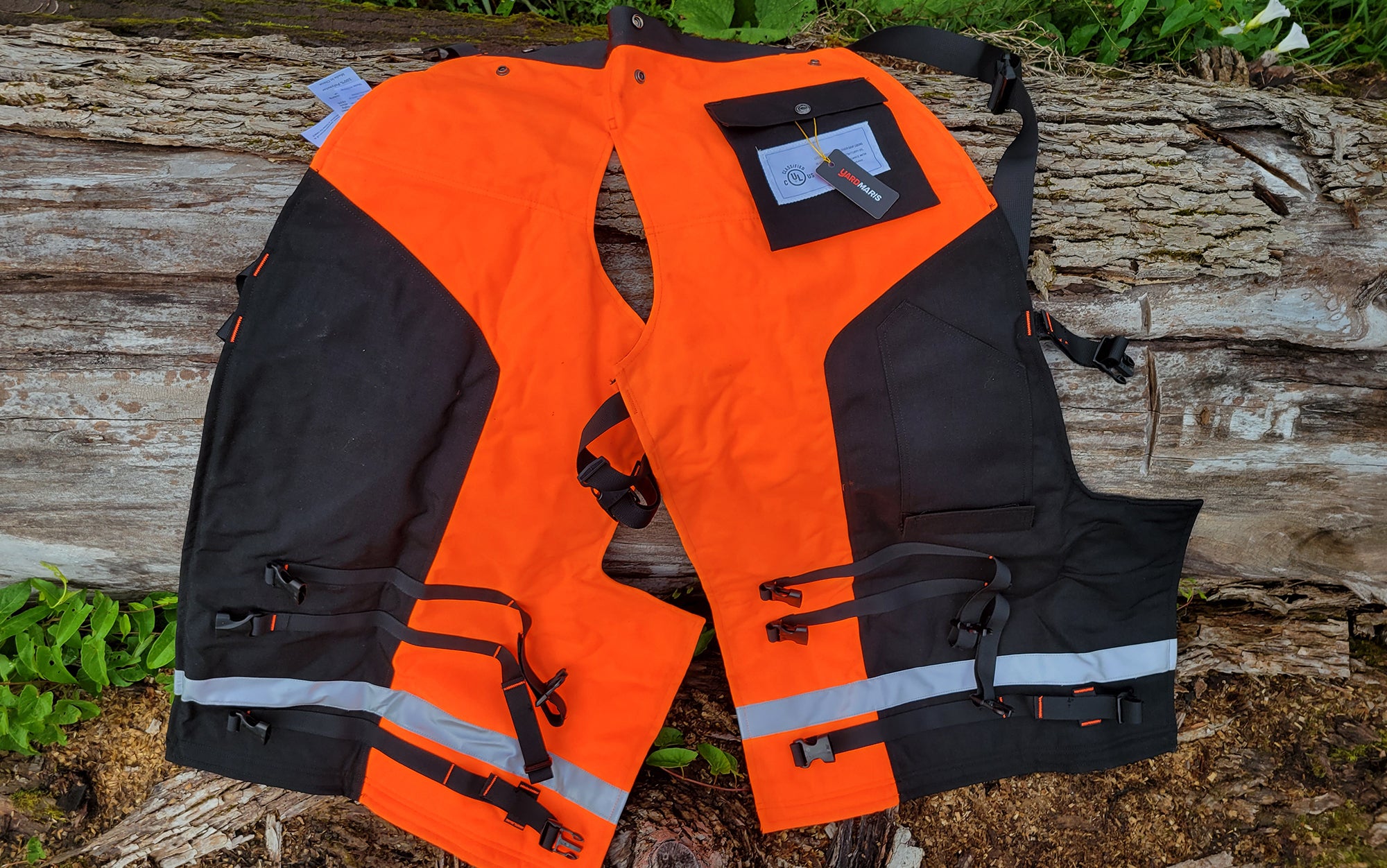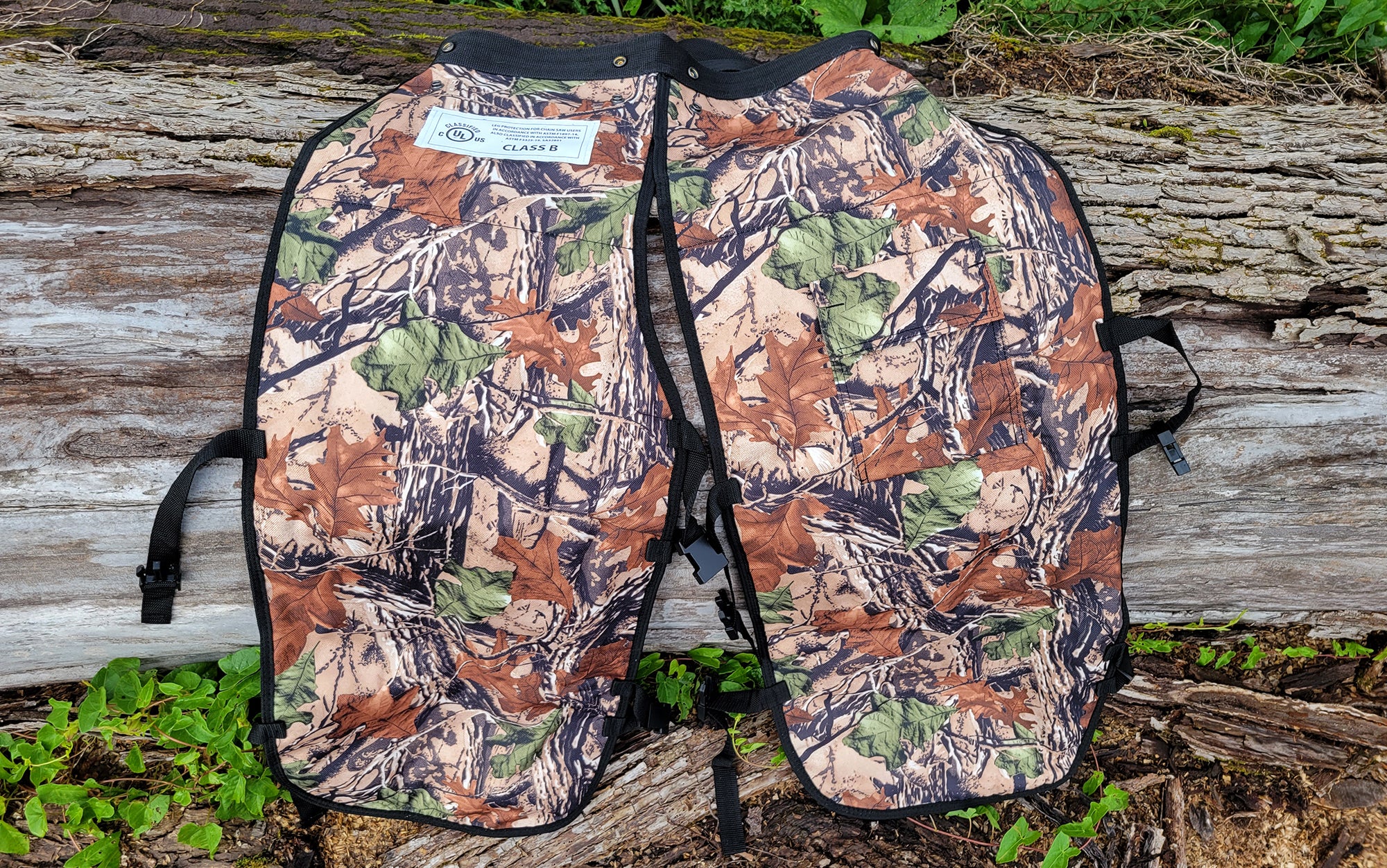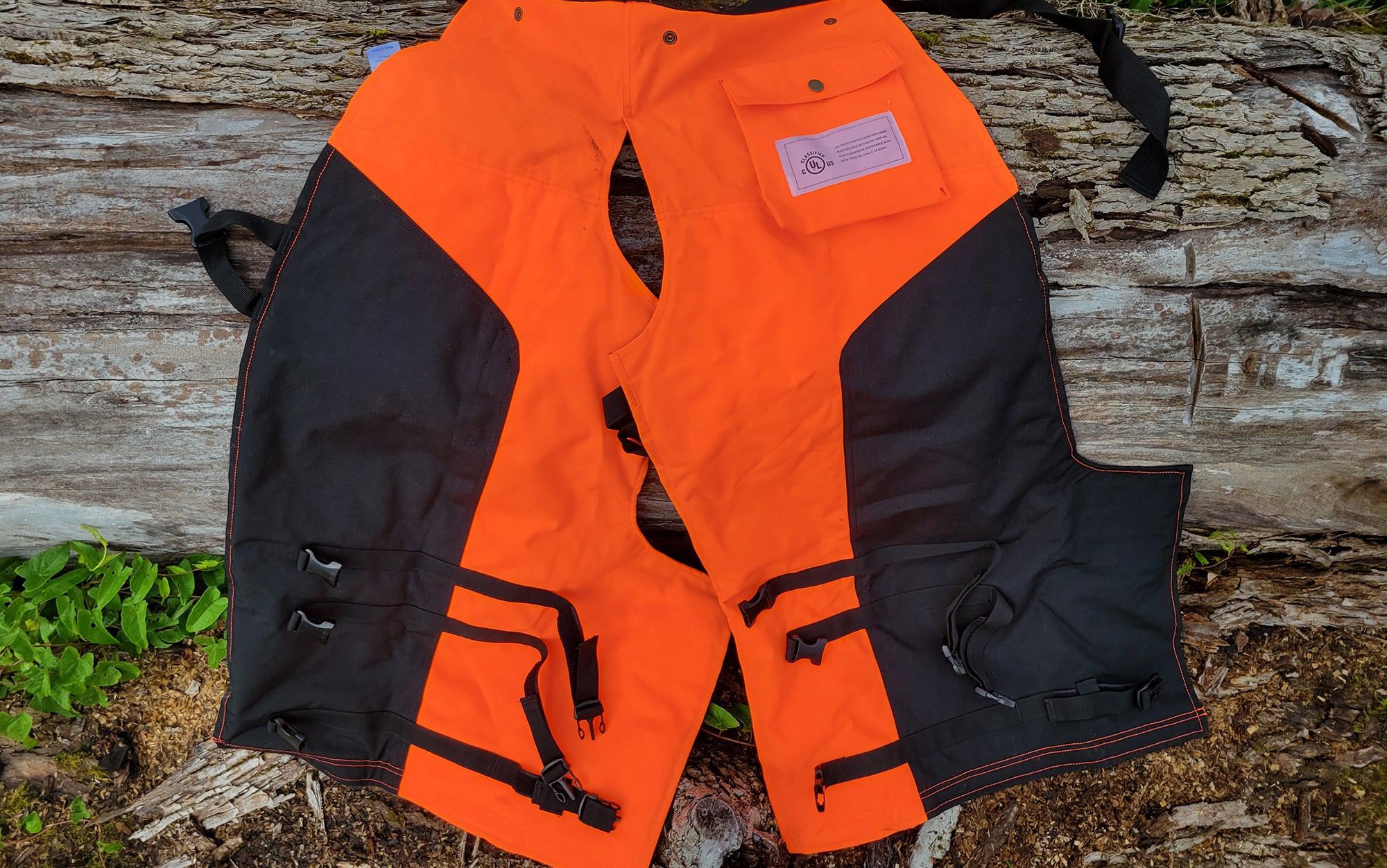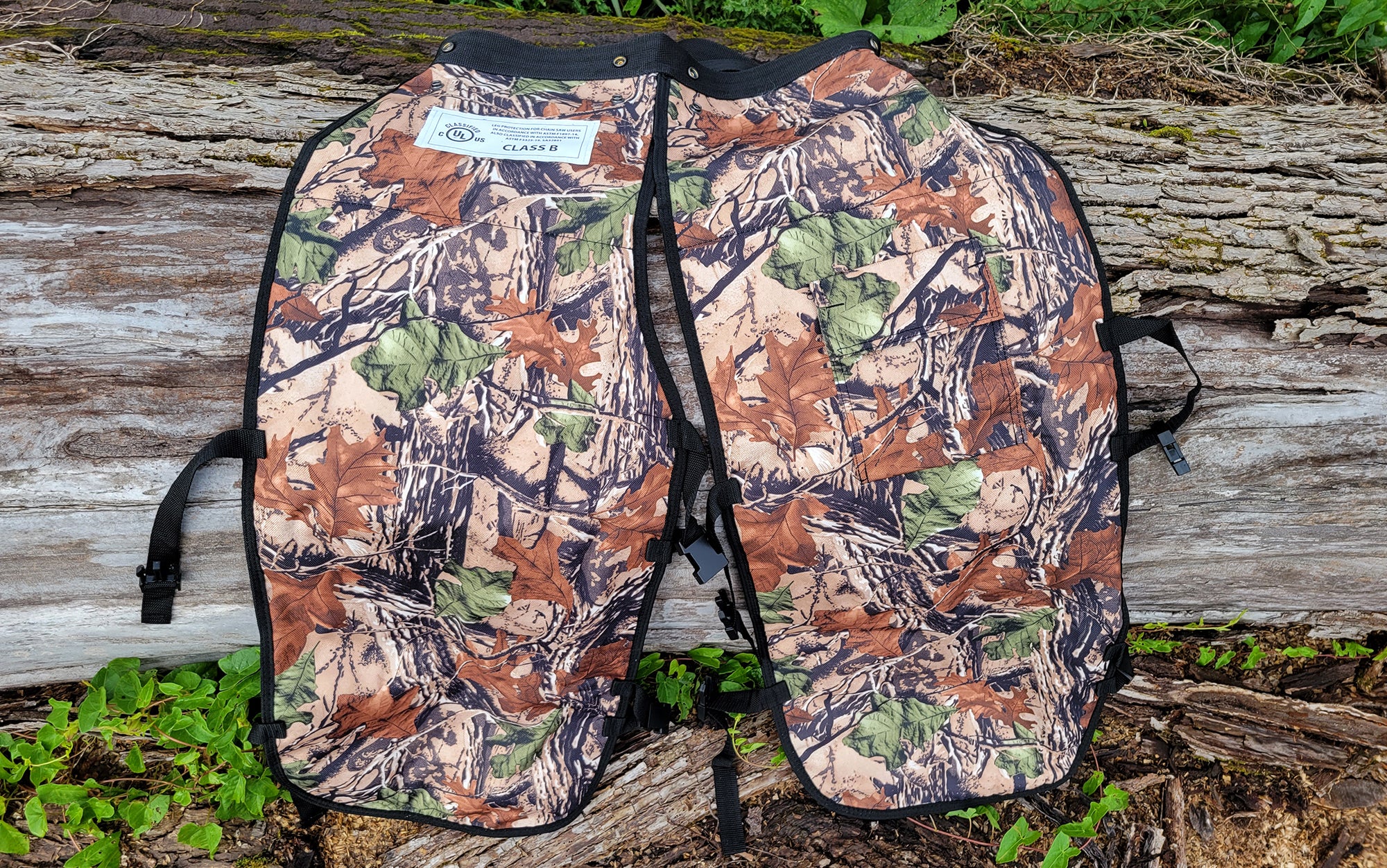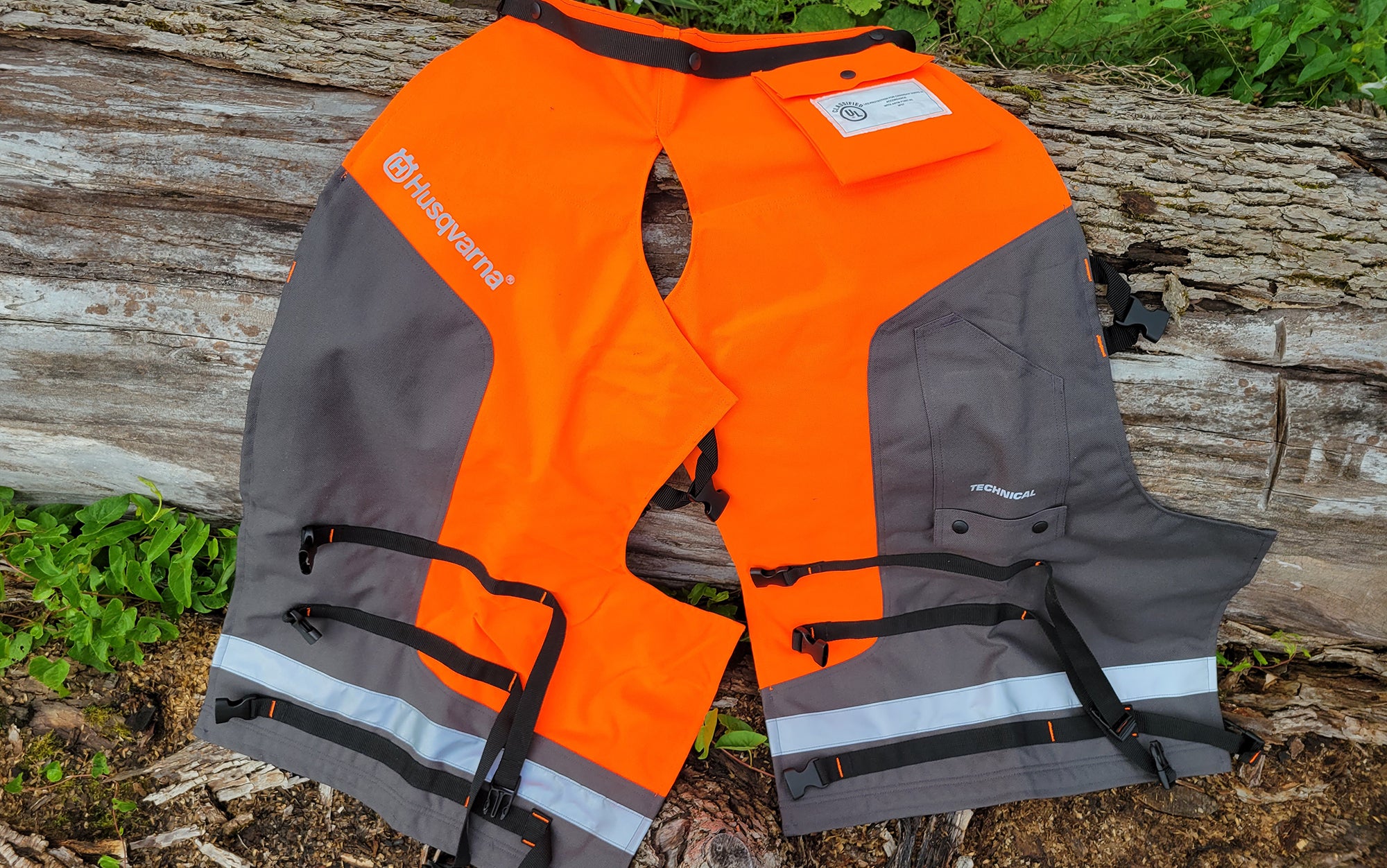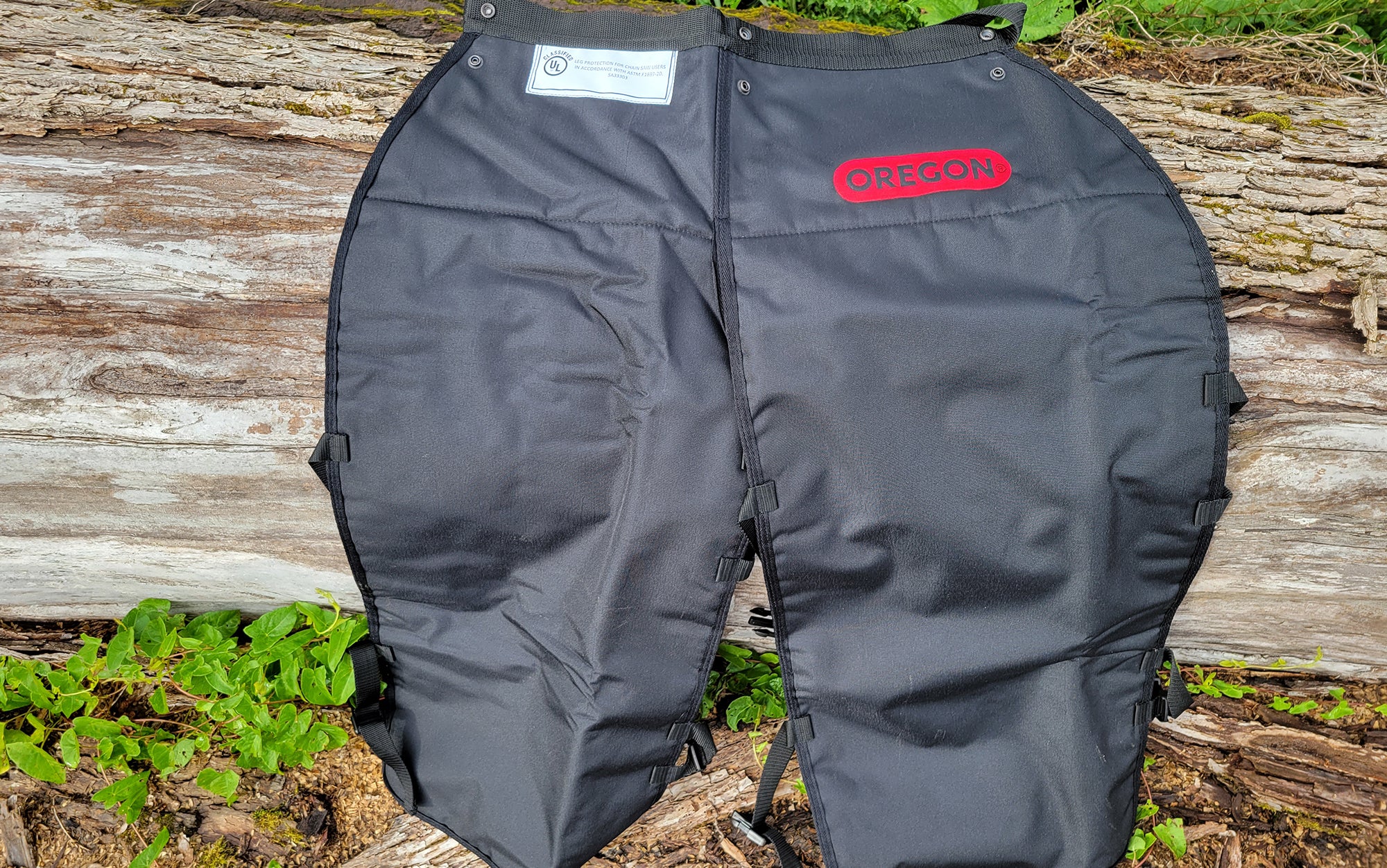The Best Chainsaw Chaps of 2023
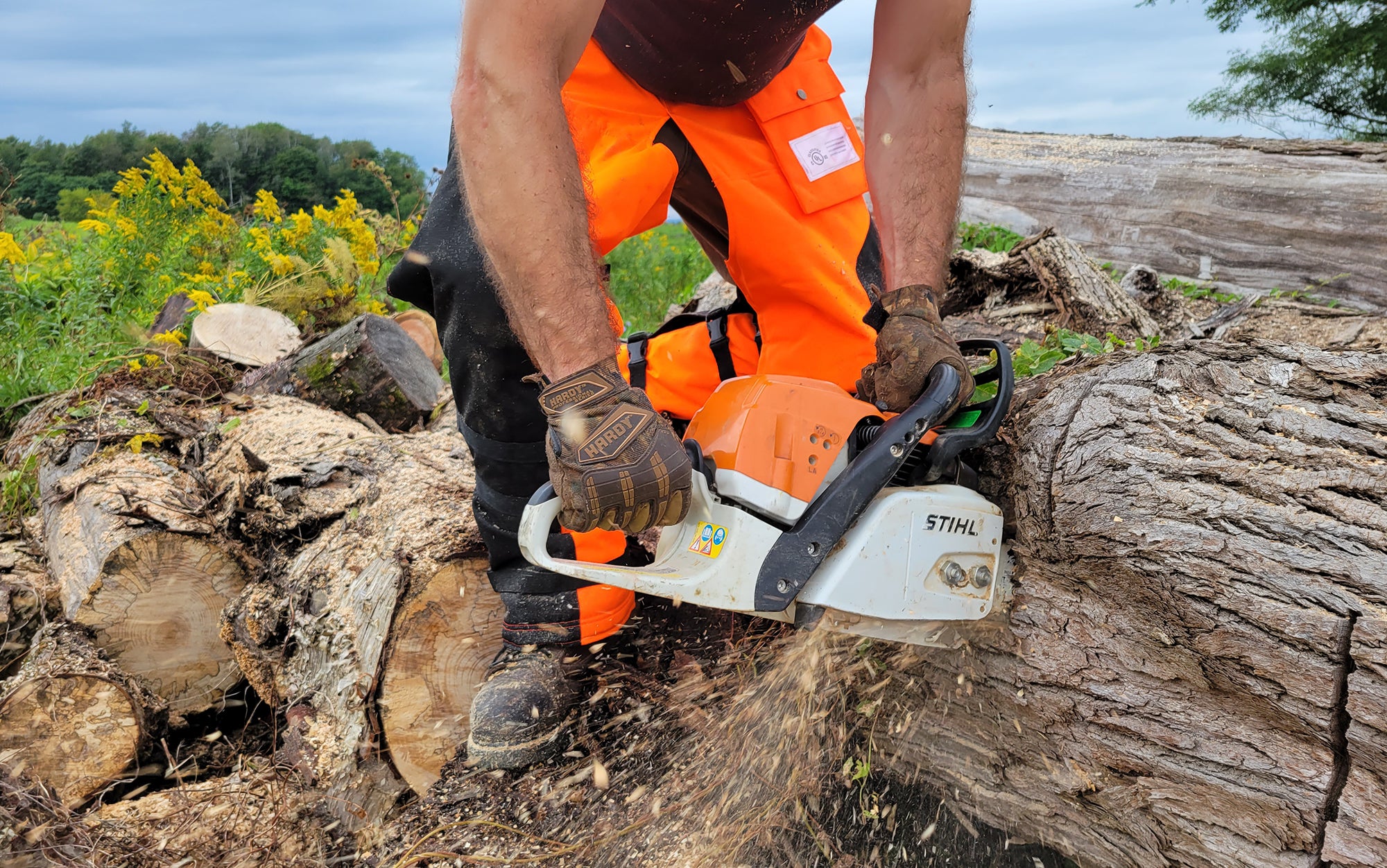
We may earn revenue from the products available on this page and participate in affiliate programs. Learn More ›
I heat my home with firewood, so a chainsaw is an essential power tool for me. But the reality is that the qualities that make them great at efficiently ripping through timber also make them hazardous to my legs. There are safeties built into modern saws to help prevent injuries from kickbacks. But, there isn’t anything on a saw to keep the user from a slip, stumble, or a drop that sends high-velocity, sharpened teeth into their legs. According to OSHA, there are about 30,000 serious injuries from chainsaws each year. And that is where chainsaw chaps come in.
Safe chainsaw practices are the best way to prevent injury. Consider chaps the last line of defense. They not only can prevent catastrophic cuts, but some have pockets to keep wedges, tools, and extra chains in to help you work more efficiently.
I tested five of the best chainsaw chaps to help you determine which is right for you and what level of protection you need.
- Best Class A: Yardmaris Technical
- Best Class B: Forester 437
- Best Budget Class A: Zelarman Class A Chaps
- Husqvarna Technical Class A Chaps
- Oregon Class B Chaps
How We Tested Chainsaw Chaps
There are two main types of chainsaw chaps that I tested: class A and class B. Class A chaps cover the entire front and sides of the leg, and wrap all the way around the back of your leg from the top of the calf to your ankle. Class B chaps cover the front and sides of your legs from waist to ankle. Some chaps only cover just past the knee, but we did not include them in the testing.
To put these chaps to the test, my good friend Bill (who used to operate a firewood business with his father) and I took them out to the farm and bucked up a log pile. We also did some splitting by hand. We wore all the chaps to see how they fit, how comfortable they were, and how easily we could bend and kneel and work in them. I also walked through some briars with them to see how prick resistant they all were. Aside from that, we laid them all out and compared construction and materials used. For the most part, they all performed well and fairly similarly to each other, and the little details made one a winner over another.
ASTM Rated
It is important to note that all the chaps in this test are UL classified, and all meet or exceed ASTM F1897-14 or ASTM F1897-20 standards for chainsaw protection. The main difference between -14 and -20 is that the -20 receives an international standardization, but they meet the same protection levels. The UL classified rating is important because it means they have all been tested and approved by the third-party testing group. Chaps that do not have this rating have not been tested independently and have nothing to back their claims. The third party is able to achieve a much more scientific test protocol than I could by simply sawing into the chaps, so that’s why we’re going with their rating for this review.
How Chainsaw Chaps Work
Chainsaw chaps aren’t a hardened shield that stops a saw in its tracks. Instead, they use a woven polypropylene fabric. When a chainsaw cuts into the fabric, the long strands catch in the teeth then tangle in the chain and sprocket to stop the chain from moving. It should be noted that some manufacturers say their chaps are not suitable for electric chainsaws because of the increased torque. However, even if that is the case, chaps offer more protection than your jeans.
Best Chainsaw Chaps: Reviews & Recommendations
Best Class A: Yardmaris Technical
Drew Conover
Key Features
- Adjustable length for different users
- Safety orange and black with reflective safety stripe
- Eight layer protection
- Class A chap
- Price: $89
Pros
- Two Pockets for tools and wedges
- Comfortable and flexible
- Most heavy-duty construction
Cons
- As with the other Class A chaps, they run hot and make your legs sweat
The Yardmaris Technical chainsaw chaps had all the features I wanted, and had the best construction. All the chaps we tested were apron style, and most had just one layer of material between the belt and the protective material starting at the top of the thigh. The Yardmaris had double layers of 1050 Denier Cordura holding the belt to the protective pads. It also had the thickest lining material between the padding and the leg. These chaps just felt and appeared more heavy duty than the rest.
The materials were thicker and held up better than the others, especially the lining material, which did the best in the briars. This thicker construction also helped them hold their shape and not sag at the waist, making them very comfortable moving around, crouching, and bending in. The wedge pocket was easy to use, and the easiest to open and close with heavy Velcro at the bottom. Other chaps had snaps that were hard to snap one handed. The smaller top pocket was large enough to toss in a spare chain and a bar tool, and the snap closure worked well. I think these are a great value for a class A pair of chaps, and a great option for someone looking for full protection.
Best Class B: Forester 437
Drew Conover
Key Features
- Adjustable length for different users
- Realtree camo
- Eight layer protection
- Class B chap
- Price: $59
Pros
- One pocket large enough for small wedges or bar tool and chain
- Comfortable and keeps legs cooler than others
- Heavy duty 1200D Oxford polyester outer
- Water and oil resistant
Cons
- Two buckles were on backwards. One minute fix, but annoying
The Forester chaps were cool and comfortable to work in. Class B chaps keep your legs cooler because the whole back of your leg is open, and it definitely makes a difference on a warm, muggy day. The single pocket on these chaps was just enough for a wedge, but because there is no opening at the bottom of the pocket, it can be a little hard to get it out with the flap closure at the top. As with all the other chaps, you can adjust the overall length by folding the waist belt over at the top to shorten them up if needed.
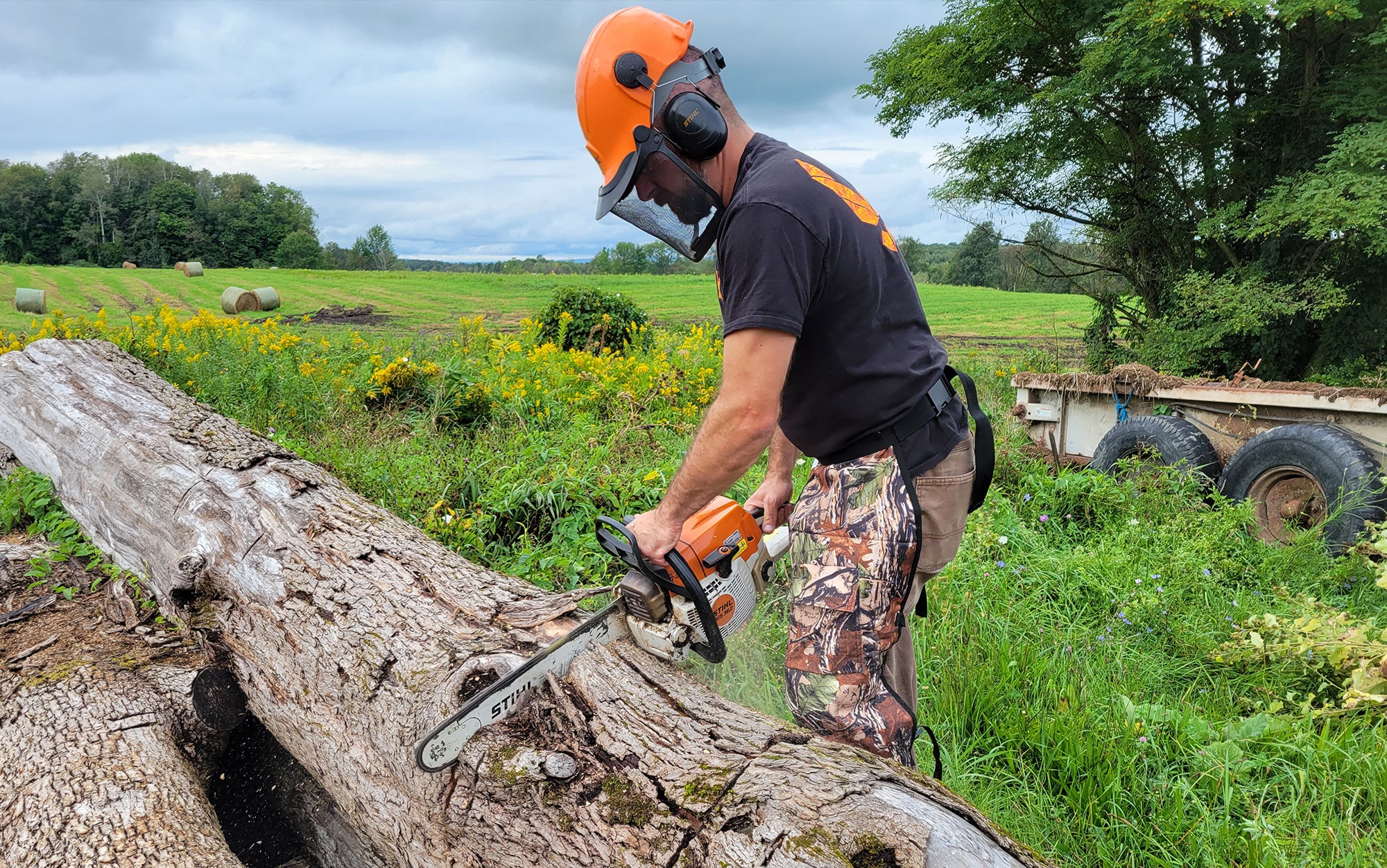
In comparison to the other class B chaps, the Forester 437 chaps had a thicker, tougher lining material, which held up better to briars. Once I sorted out the buckles, these were easy to take on and off and get adjusted for a proper fit. At the end of the day, these narrowly beat the Oregon chaps for the top spot because they included a pocket and the liner was a bit thicker. If you’re looking for a solid pair of class B chaps, the Forester 437 chaps are my pick.
Best Budget Class A: Zelarman Class A Chaps
Drew Conover
Key Features
- Adjustable length for different users
- Safety orange and black
- Eight layer protection
- Class A chap
- Price: $69
Pros
- One pocket for a chain and bar tool
- Class A coverage without the price
Cons
- Heaviest Class A chaps tested
- Sagged more than others
The Zelarman class A chaps provide a great price point for full class A protection. They do, however, give up some features such as reflective stripes and a wedge pocket. During testing, the Zelarman Chaps were plenty flexible for bending, kneeling, and crouching but “grabbed” our calves a little when standing back up. We found ourselves hiking them up every so often. This certainly was not a serious problem, but it is worth noting when all the chaps are pretty similar. These would be a great chap for someone who is on a budget because they perform well and are nearly $50 less than the Husqvarna chaps. I found that these chaps in particular, shed water when I cut into a hollow log full of water that gave my leg an unscheduled bath. They didn’t seem to absorb any of it, which was nice since they were already a bit heavy.
Husqvarna Technical Class A Chaps
Drew Conover
Key Features
- Adjustable length for different users
- Safety orange and gray with reflective safety stripe
- Six layer protection
- Class A chap
- Price: $119
Pros
- Two pockets including a wedge pocket with bottom opening
- Most comfortable Class A chaps
- 1000D Polyester with PVC coating
Cons
- Snaps on wedge pocket very stiff and hard to work one handed
- Least protective layers
The Husqvarna chaps were very comfortable and felt lighter than the others. The light weight helps keep them from sagging and bunching up at the ankle, and during testing they stayed in place while moving from a crouch, to standing and bending. The downside for these chaps is their very thin lining material. If the liners rip, then the protective layers can be damaged, which means the chaps will no longer perform the way they are designed to. But, that thin, slippery liner contributes to comfort, how easily they slid on, and that they don’t bind—so it’s a trade-off.
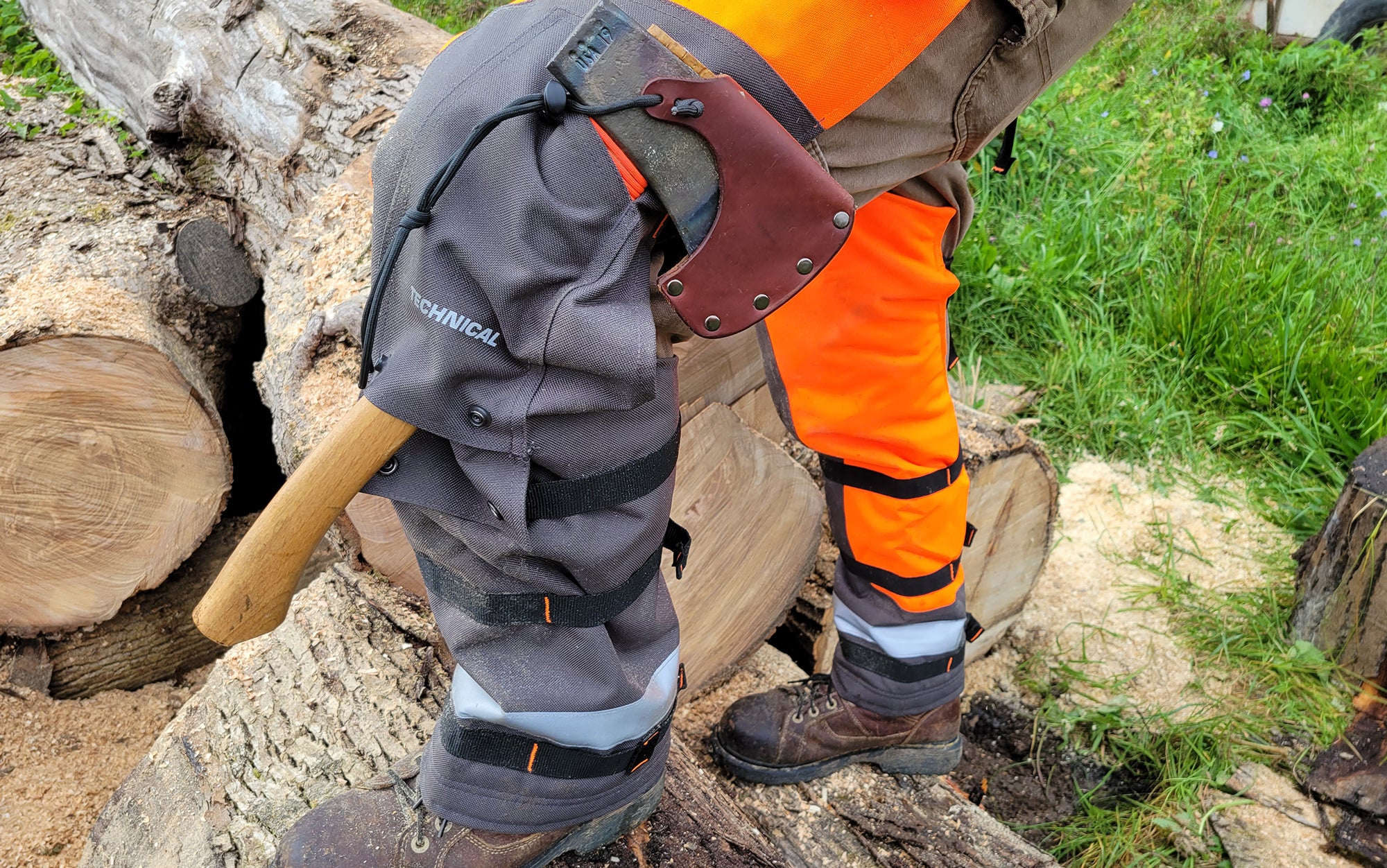
The Husqvarna chaps certainly don’t feel cheap or poorly made, just a little less robust than the Yardmaris pair. That being said, they still manage to meet the same requirements and standards that the other chaps do while being lighter and having less layers. If you’re cutting for long periods of time, and weight is an issue, the Husqvarna class A chaps should work well.
Oregon Class B Chaps
Drew Conover
Key Features
- Adjustable length for different users
- Black
- Eight layer protection
- Class B chap
- Price: $56
Pros
- Double layer 600D construction above padding
- Easy on and off
- Keeps legs cool
Cons
- No pockets
- Thin lining material
The Oregon class B chaps were very comfortable and provided good protection. Bending and kneeling was easy, and the double-layer construction meant these weren’t sagging in the front. The thin and slippery liner made these comfortable and allowed them to move up and down on your leg as you changed stance or position, but they didn’t do as well with briars. Really, the only factor that kept these out of the top spot for class B was the lack of a pocket. If you don’t need or want a pocket, and are just looking for some bare-bones, quality protection, the Oregon chaps would work very well. As with the Foresters, the Oregon chaps kept our legs cooler than the class A chaps, and allowed us to move freely while cutting and climbing and splitting. I have always liked Oregon bars and chains as simple, quality parts, and these chaps seem to follow that pattern.
How to Choose Chainsaw Chaps
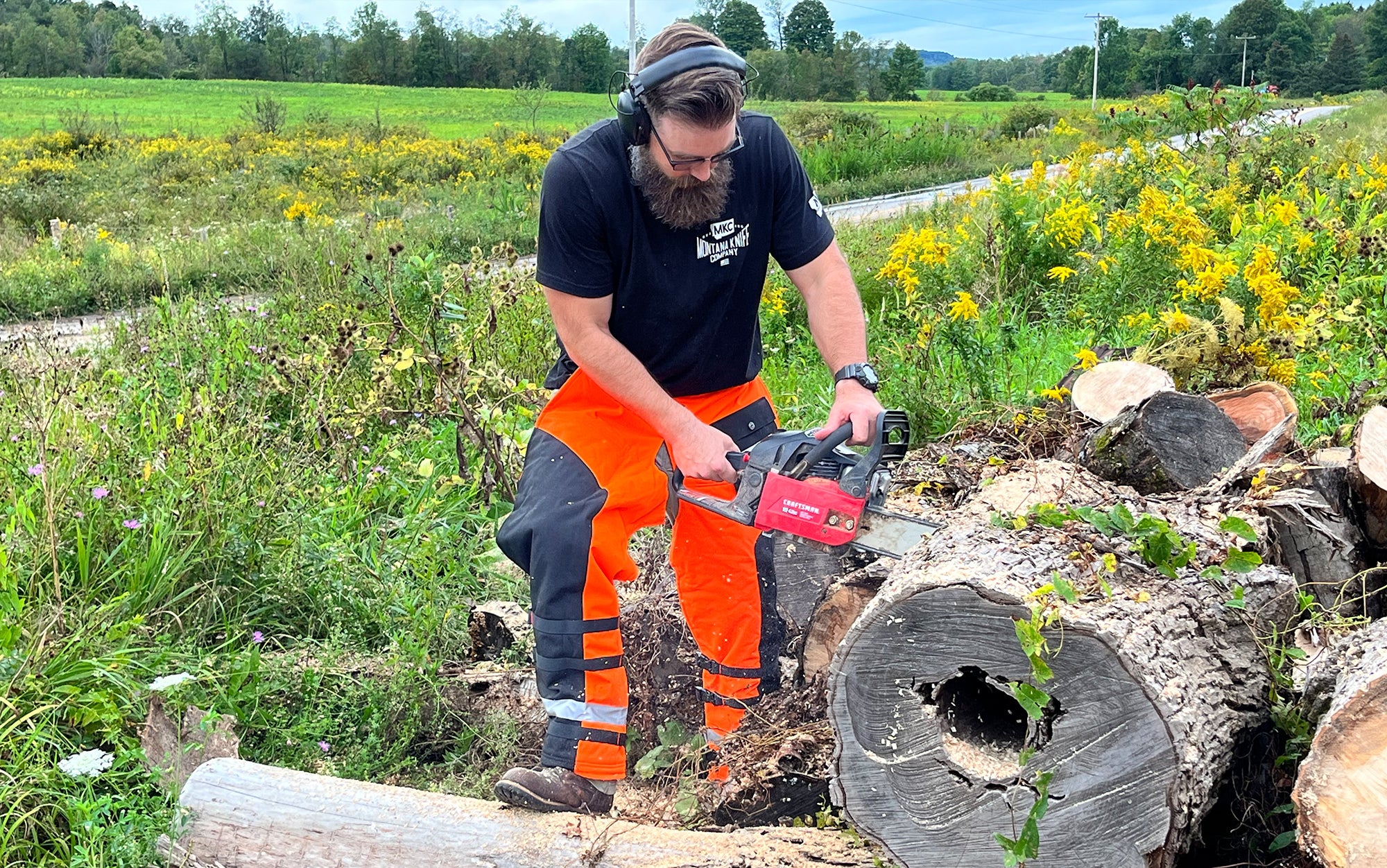
The most important factor in choosing chainsaw chaps is coverage. If you will be climbing or cutting at strange angles or walking on large downed trees while limbing, then having the full protection of a class A chap makes a lot of sense. Arborists, for example, will almost always have class A chaps. But, if you’re just bucking some firewood, cutting up some fallen limbs, or even felling some trees, the protection of a class B chap should be adequate.
Once you decide between class A and B, then you can get into the smaller details like how many and what size pockets you might want for tools, wedges, and even a hatchet. Having those features can save a lot of time in the long run, and help you to keep track of your tools more easily. It’s not hard to lose a wedge or bar tool in downed limbs and piles of chainsaw shavings.
Lastly, we can’t forget that cost is a factor. Most chaps fall between $50 and $150 dollars. I always try to get the best I can afford when it comes to safety gear. But, remember that the extra money usually goes towards features, and not necessarily protection.
FAQs
Q: How do chainsaw chaps work?
The chaps have a specially woven polypropylene fabric that catches long strands in the teeth, winds up in the chain, and sprocket to stop the chain from moving.
Q: How should I care for my chaps?
That partially depends on the brand. Be sure to read the care label as some chaps can be damaged by a washing machine. If the front or back of the chaps get ripped, and the special fabric inside get disturbed or damaged, the chaps should be replaced because they may not work correctly if the inner pads are damaged.
Final Thoughts
Proper protective equipment can be the difference between a close call, and a call to emergency services. When I was about 16, I saw a co-worker remove his finger with a chainsaw in a split second, and since then, I have respected the machine’s power, and made sure something like that wouldn’t happen to me. You don’t have to spend a whole lot to prevent a whole lot of trouble. Do yourself a favor and pick up a pair of chaps if you plan on using a chainsaw.
- Best Class A: Yardmaris Technical
- Best Class B: Forester 437
- Best Budget Class A: Zelarman Class A Chaps
- Husqvarna Technical Class A Chaps
- Oregon Class B Chaps
The post The Best Chainsaw Chaps of 2023 appeared first on Outdoor Life.
Articles may contain affiliate links which enable us to share in the revenue of any purchases made.
Source: https://www.outdoorlife.com/gear/best-chainsaw-chaps/
